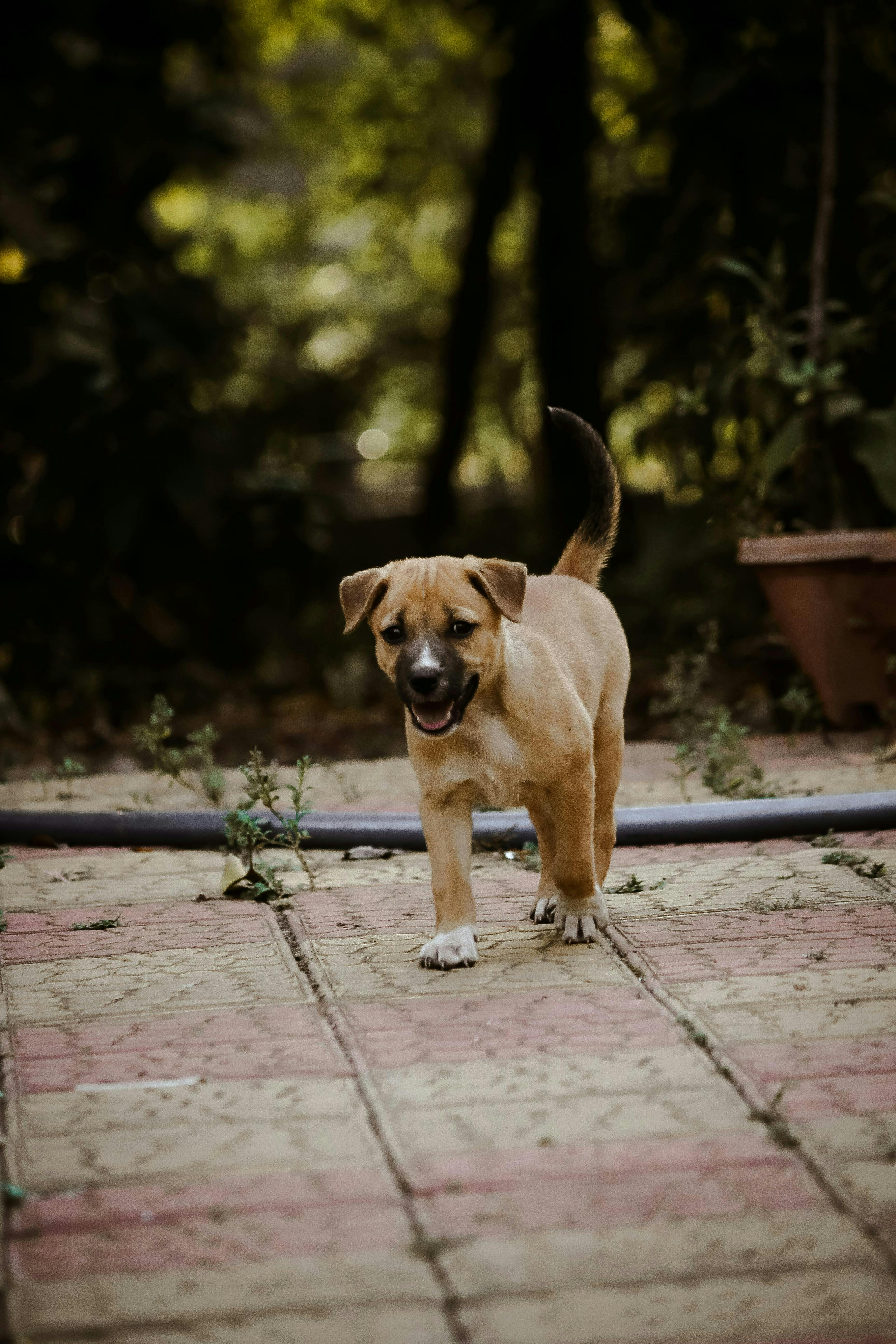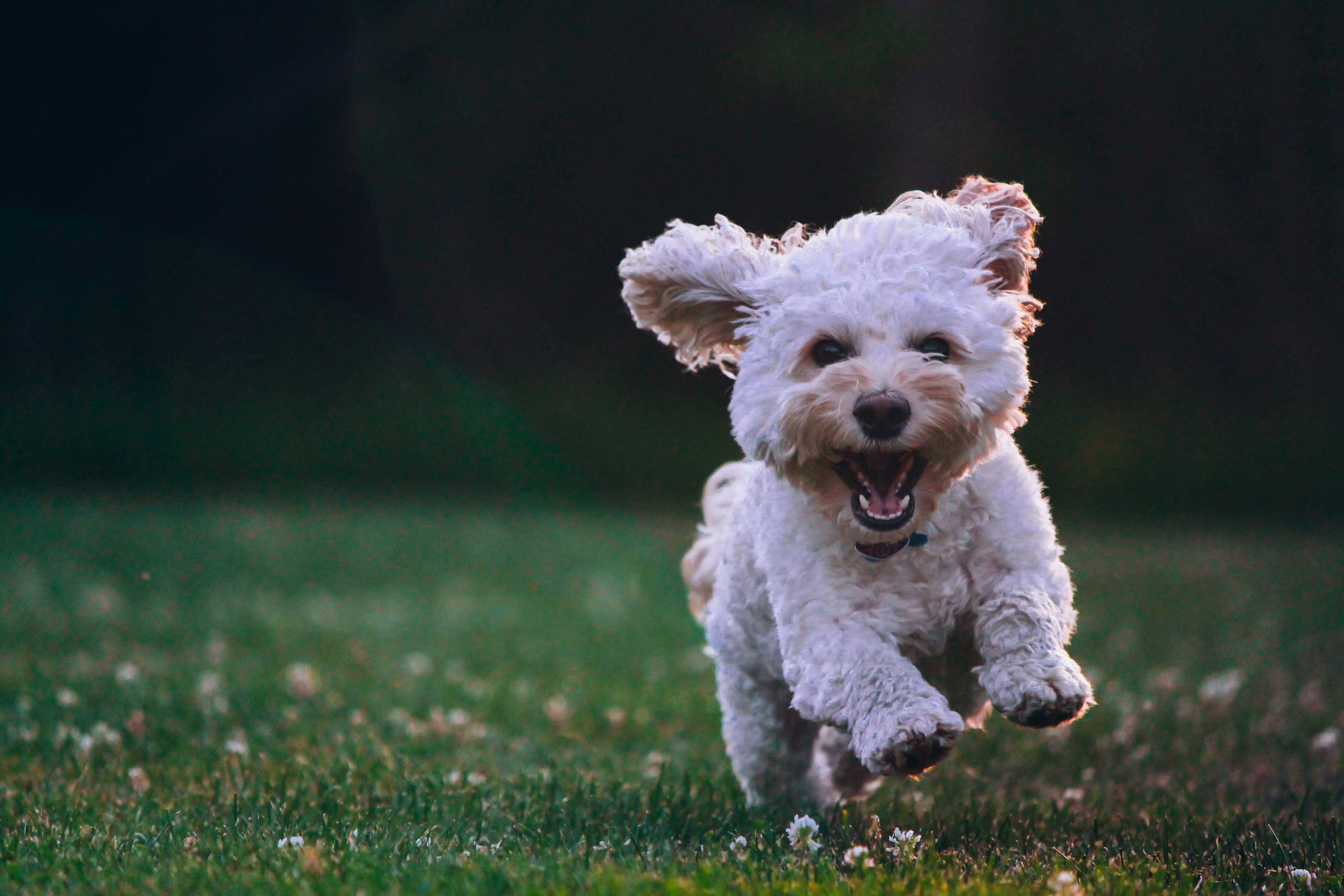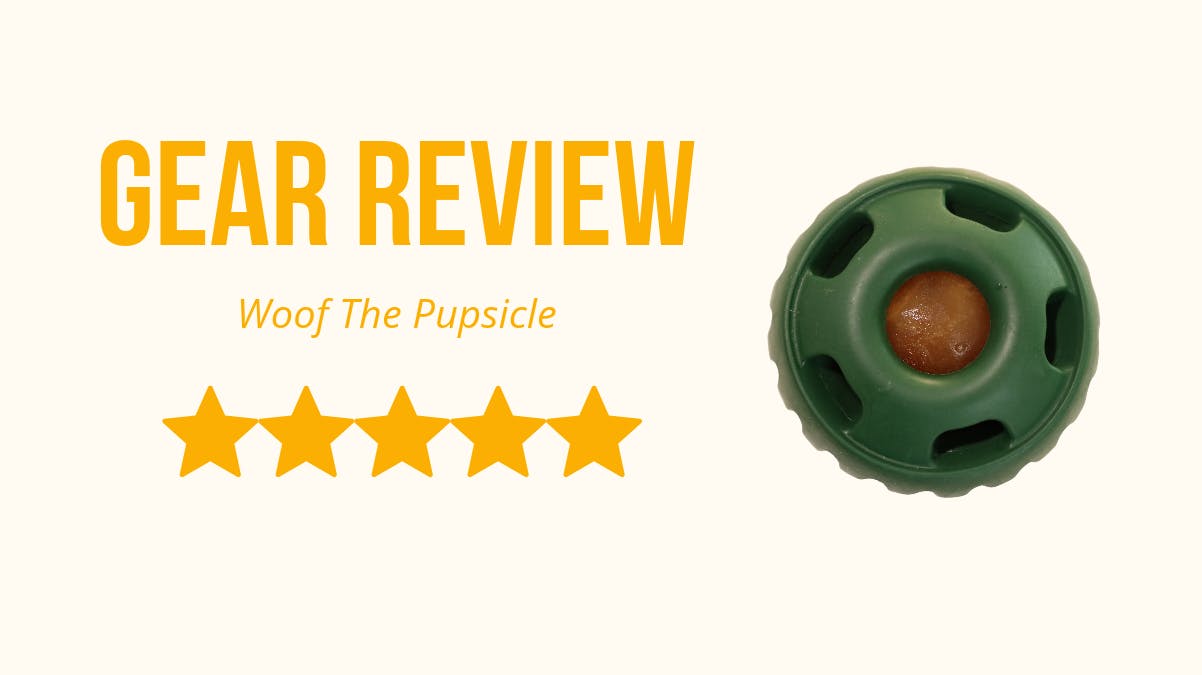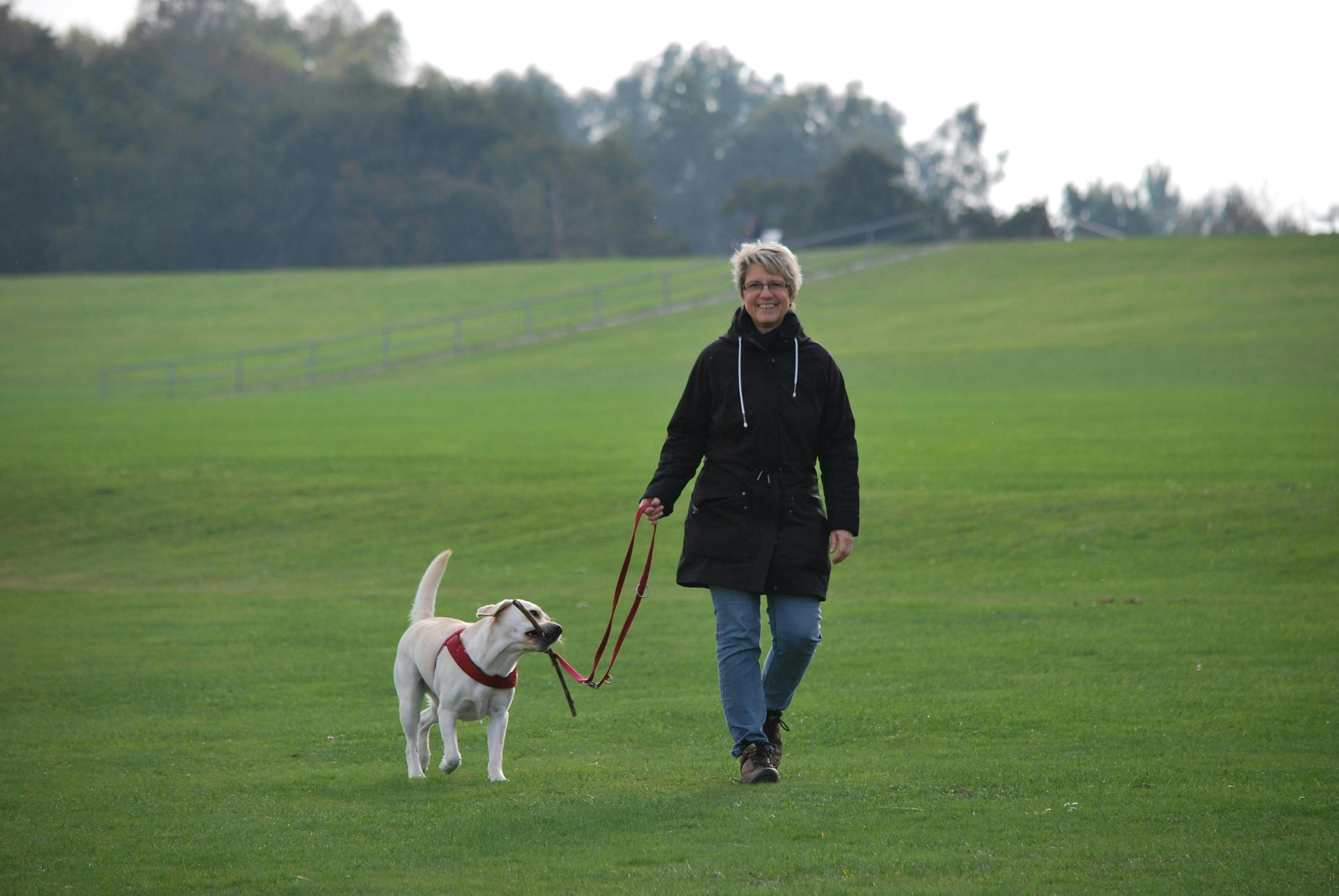How to Solve The Three Most Common Puppy Training Problems
Training Tips | By: TAYLOR WYLLIE, KPA CTP | Jun 07, 2024


Unlock 10 Expert Puppy Training Tips!
Sign up with your email and receive a free video guide to transform your puppy into a well-behaved companion
Welcoming a new puppy into the family is like inviting a tiny bundle of cuteness and chaos into your home.
Last month, I had the pleasure (and occasional frustration) of helping my sister with her 9-week-old Lagotto Romagnolo puppy, Finnick. Spoiler alert: he’s adorable, but boy, does he come with a set of challenges. Typical puppy challenges that I have seen my clients struggle with time and again.
Namely, chewing, mouthing/puppy biting, and potty training.
In this post, I’m going to share the tips and tricks I always share with my clients and that I personally used to address Finnick’s chewing, mouthing, and potty training escapades.
Don't forget to check out the accompanying video where I talk about these tips in more detail and show you examples with Finnick in action.
So, let's dive in and tackle these puppy problems together.
How to Handle Puppy Chewing
It’s a tale as old as time—you leave your puppy alone for one minute when you go to answer the door, fix yourself a snack, whatever, and you return to find your puppy has torn your slippers to bits.
Puppies chew on everything. My sister’s puppy, Finnick, thoroughly enjoys table legs and couch cushions. My childhood dog loved Barbie feet. My friend’s Aussie had a taste for remotes.
Of course, it’s developmentally normal for your puppy to chew. Puppies explore the world with their mouths, are teething, and dogs of all ages and breeds enjoy the sensation of chewing. Chewing to dogs is CrossFit to bros. They need to do it.

That said, you don’t have to accept unwanted chewing.
Before you do any training, you need to employ some management strategies. Get down on the floor of your home to look at it from a puppy’s eye view. Put away anything your puppy might find tempting that you would prefer they don’t destroy or that would be dangerous for them to sink their teeth into—shoes, picture frames, remote controls, children’s toys, house plants, electrical cords. If you have a room where this is impossible use gates to ensure your puppy doesn’t have access to that room.
Whenever your puppy is not crated, in a playpen or another safe place, you should be supervising them. Seriously. You have to be vigilant about supervision during puppyhood, especially in those first few weeks. Pretend you’re a micromanager who just hired a college intern.
Management not only prevents your dog from getting hurt, but stops bad habits from developing. If you don’t allow your puppy to ever access a shoe to chew on then they won’t develop a taste for shoes.
Now, remember that puppies need to chew. It’s your job to provide them with appropriate chews. There are two general categories here—digestible chews and non-digestible chews. You should provide both.
Digestible chews are things like pig’s ears, bully sticks, and Himalayan cheese chews. Non-digestible chews are rubber toys (like from West Paw or Kong), frozen washcloths, or plush animals.
Dogs have chewing preferences and will enjoy certain textures over others—as you get to know your puppy you will likely see what types of chews they gravitate toward. Those are the chews you’ll want to provide going forward.
Even with management, your puppy will still likely chew on the “wrong” thing now and again. (They don’t know it’s wrong.) When this happens, use a positive interrupter. That is, make a kissy noise, gently clap your hands, say their name, etc. As soon as they get off whatever they are chewing on redirect them to an appropriate item to chew on.
Try and match textures here. If your puppy is chewing on a couch cushion, give them something soft as that’s the sensation they’re seeking out. Likewise, if they are gnawing on a table leg, give them something hard to chew on.
Sometimes you will have to be more persistent than other times. It may take 15-30 seconds, maybe even longer, to get your puppy off of whatever inappropriate thing they’re chewing on sometimes. Try to be upbeat and more fun than your couch cushion competitor (or whatever your puppy is chewing on). Above all else, be persistent.
Consistency is also key. Chewing on inappropriate items will not go away overnight. You need to build a strong reinforcement history with appropriate chews, which takes weeks to months. Be patient and hang in there.
How to Address Puppy Biting
Puppy biting needs no introduction. Most likely, if you have a puppy, you are familiar with their excessive need to bite your hands, feet, elbows, ankles, other body parts, or your clothing. Puppy biting tends to be at its peak when your puppy is three to five months old and tends to fade by seven months.

Generally, mouthy puppies are motivated to chomp on you because they want your attention. It’s a normal play behavior for dogs (if you watch dogs play you’ll notice how mouthy they can be with each other).
In fact, I play what’s called “bitey hands” with my adult dog as a form of behavioral therapy for his reactive behaviors (as invented by Dr. Amy Cook). In this game, I “bite” him using my hands and he “bites” me by very gently putting his mouth on me. This game releases endorphins in my dog because it’s such an intuitive way for him to play. Now, I don’t suggest playing this game with your puppy, but I wanted to mention it to drive home my point that biting you is as much fun for a dog as peek-a-boo is for a baby. (And maybe you can play bitey hands with your dog once they’ve grown.)
Additionally, as aforementioned with chewing, puppies explore the world with their mouths. You are a part of their world. Hence, they put their mouth on you.
It’s actually a good sign if you have a mouthy puppy—it means they’ve been properly socialized. Of course, normal is not synonymous with desirable. Puppy biting can be annoying at best and painful at worst.
As with all puppy training let’s take a look at management first. It’s always best to set your puppy up for success and prevent unwanted behaviors from becoming engrained habits.
Management For Puppy Biting:
- Avoid encouraging play with hands or clothes
- Provide appropriate outlets for chewing (see the chewing section above)
- Use toys to play with your puppy and rotate them to keep them exciting
- Provide ample mental and physical exercise
- Ensure your puppy is getting enough sleep (they need 18-10 hours of sleep per day)
How you handle mouthing is very similar to how you handle chewing. If your puppy starts biting you calmly withdraw your attention or freeze. Ensure you are being calm and not punitive. Then redirect your puppy to an appropriate toy or chew. If your puppy is in a super bitey mood, you can remove yourself from the situation completely by walking away. (And think about if your puppy needs a nap, is hungry, or is under-exercised.)
You don’t want to make a yelping noise or yank your hands or feet away. Likewise you don't want to push or shove your puppy away with your hands, arms, or legs. If you do, you will likely turn puppy biting into a game that your puppy will love to play. Try to be as boring and neutral as possible.
Make sure you don’t punish your puppy for biting. Punishing them—by yelling, holding their muzzle closed, kneeing them, or any other punitive action—can cause your dog to fear you and generalize that fear to all humans.
Additionally, punishing your puppy does not teach them the appropriate way to interact with humans. It’s our job to teach them how to navigate our human world, including how best to play with us.
Just like chewing, puppy mouthing is not something that will go away overnight. Be patient and consistent and you will see a big reduction in biting overtime.
How to Potty Train Your Puppy
While not a “problem” behavior per se, many of my clients struggle with potty training. It’s something that requires time and consistency. And nobody likes stumbling upon a puddle of pee or poop their puppy left behind. So, let’s talk about it.
The number one way to potty train your puppy is to take them outside (or to other appropriate places for elimination) frequently. As frequently as every 15 minutes.
When potty training my sister’s puppy, we took him out every 15 minutes for the first few days and then every 15-30 minutes after that. He was a potty training champion with only a couple of accidents. I primarily credit that to our consistency (as well as his breeder who started the process before we took him home and his genetics as some puppies potty train easier than others).
As you get to know your puppy, you will notice signs that they need to go—you may see them sniff the ground, go to the door, or circle. Honor these signs!

When not engaged in physical activity, a puppy can hold their pee for one hour plus their age in months. So, a 3-month-old puppy should be able to hold it for 4 hours. That said, full bladder control may take 4-5 months to develop and accidents are likely to still occur for up to a year.
Supervision is the other side of the coin here. If your puppy is outside their playpen or crate, you should watch them. There are no exceptions. To make it easier, you can use the aptly named “umbilical cord method” and leash your puppy to keep them near you at all times (but you don’t have to do this).
You also want to ensure you’re feeding your puppy at set times 2-3 times per day with the last meal at least two hours before bedtime.
Many people want to restrict water intake to reduce accidents, but doing so will probably backfire. If a puppy doesn’t know when they will be able to drink next they may drink excessively whenever it’s offered, causing frequent pee breaks.

When your puppy does eliminate in an appropriate area, reinforce them with attention, play, and/or a tiny tasty treat. If your puppy does not “go,” after about five minutes head back inside and try again in 5-15 minutes (being extra sure to supervise them).
I suggest leashing your puppy when you take them for potty breaks, even if you have a fully fenced yard. This allows you to take your puppy out and wait for them to eliminate before having fun, off-leash time (a big reward!). If they aren’t leashed they can choose to do whatever they wish before eliminating. It may also be harder to see if they have gone potty or not.
That said, we kept my sister’s puppy off-leash because he struggled to “go” while leashed. Just a reminder to do what works best for you and your puppy.
Off-leash or on-leash, what you don’t want to do is immediately take your puppy back inside after elimination. This will teach them that peeing and/or pooping always ends the fun. They’ll learn to hold it and to avoid pottying outside. Instead, spend time outside playing with them after they've gone.
When an accident happens (and I say when not if because very few puppy owners get away with zero accidents) don’t yell at your puppy. All punishment does is teach your puppy not to eliminate in front of you, which will make the house training process monumentally more difficult. Simply, clean up the accident using an enzymatic cleaner (dogs are drawn to spots where they previously eliminated, so make sure you do a thorough cleaning job) and try better next time.
If you catch your dog in the act, you can try and interrupt them with a positive interrupter (say their name, make a kissy noise, or the cue “outside”) and take them to an appropriate potty spot. But your mileage may vary with this one.
If you notice potty training regressions or excessive soiling, seek out a veterinarian. Medical issues could be the culprit.
Conclusion
So, there you have it—some quick advice on how to handle three of the most common puppy “problems.” I hope this helps you navigate this challenging (and cute!) time with your puppy and bring some peace into your home.
With all of these “problems” the more consistet you are in the beginning, the more success you will have long term.
Hang in there—puppyhood doesn’t last forever, and before you know it, you’ll have a well-behaved dog who’s an integral part of your family. Happy training!









